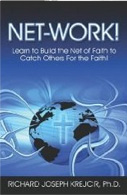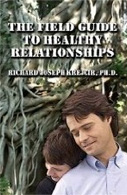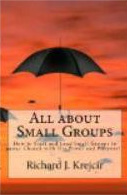"The Angels and the Harvest"
General idea: John now turns his attention to Christ Himself, the Son of Man, who was perhaps a representative of Christ, sitting on a white cloud and directing the harvest of humanity's souls through time. He is in charge with His gold crown as He holds the sickle for the crop of souls. These souls are the "vine of the earth" and are ripe, ready to fall from their vine. They have reached their maturity and are ready for harvest. Thus, the entireties of the earth's people are harvested. Then, the attention is turned to judgment and the souls who rejected Christ, whose hearts were moored to evil. They are gathered and thrown to the winepress of God's wrath. The wicked are judged, and the blood of the people who have no right to vindication, who received their just reward, who were offered grace and love but refused it and Him, have met their fate. The vindication of the righteous is met; the strategy of evil that was pursued failed, and they have met and "execrated" their outcome.
Vs. 14-20, Contexts: John is giving a portrayal of the "Last Days" and the "Second Coming" of Christ our Lord where Christ is the great Director, directing His representatives in the reaping and the harvesting of humanity's souls. This passage represents the quintessence of how most people, including many Christians, see Revelation. Yes, it is; but, it is also so much more. It is not just about judgment; it is about how we are called to life too! This passage also relates to the final "swan song" of humanity, when life and earth and all that we were to do are done. The time is up; the great harvest and judgment are upon us all. We see the contrast between
Word and Phrase Meanings:
· White cloud. The quintessential, metaphoric image of Heaven and the Second Coming of Christ.
· Like a son of man. May just mean an angel who looked like a man, or was acting as an agent of Christ. It could mean Christ standing in the midst of His Church. However, this theme normally refers to Christ's supremacy and role as Lord, Ruler, and Love for the believer (Dan. 7:9-13; 10:5-6; Ezek. 1:25-28; Mark 8:31; Col. 1:16-17). It is an apparent description of Christ's Second Coming when He comes back and rules over the harvest of the souls of humanity (those who are bought by Him, who received His grace by faith versus those who reject Him). However, this may not be Christ Himself because of the problem of the angel giving commands to Christ. It is more likely this is an angel or representative of Christ. Some see this as a message of the Father to the Son (Joel 3:12-16; Dan. 7:13-14; Matt. 13:36-43; Mark 8:31; John 5:22-27; Rev. 1:13; 4:7).
· Crown of gold means a great victory (Rev. 2:10).
· Another angel may not mean that there are literal angels engaged in this, although it certainly could be; rather, this can be a metaphor for God directing the elements and behavior of nature for His means (Psalm 148:1-12; Zech. 6:5).
· Sickle is a harvesting tool used for cutting grain. This is also the symbol used as the image of the "grim reapers" of death. It was a curved wood shaft with a stone flint blade or iron in contrast to the much smaller grape knife.
· Sharp sickle (Grain) …grapes…winepress of God's wrath. This is also a metaphor of judgment, the grain possibly referring to the harvest of the Righteous, and grapes to the harvest of the wicked (Jer. 51:33; Luke
· From the earth's vine. In context, this is an image of the harvest time, and the Feast of Tabernacles and First Fruits as well as sacrifice (Lev. 23:34-43; Num. 29:12-38; Deut. 32:33,33 Is. 34:1-8; Psalm 81:1-3; Matt. 13:24-51; 24:20; 30-31, 40-42; Mark 24:36;13:28-37; John 1:14; 14:1; Rev 14:4).
· Harvest of the earth…Fire represents the coming judgment and the return of Christ. This was also a symbol of judgment against
· Grapes are ripe… and blood flowed out of the press. Origin of the term, "grapes of wrath" refers that crushed grapes look like blood and was an ancient term for judgment and the final battle of good against evil when blood will flow (Gen. 49:11; Jer. 25:30; Joel 3:13). This is also a contrasting picture of Christ's love poured out for us, the faithful; John calls the faithful a vine in Christ (Gen. 49:9-12; John 15:1; Rev. 16:6).
· Outside the city. This is where the winepresses were operated because of the mess they made. Possibly, this is an image of the exclusion of the wicked from God's mercy and protection and/or the separation of good from evil.
· High as the horses' bridles. A "hyperbole" metaphor for battle and war, that it will be quick and swift. It was common for Jews and other ancients to exaggerate battles for epic effect; the audience, of course, knew the reality. The apocryphal book 1 Enoch 100 gives a similar account.
· Winepress is a trough made of rock and mortar and used to make wine; it is also a symbol for divine wrath and judgment, as Isaiah's image of how God "tramples" His enemies. In context, this also refers to "viticulture," the cultivation of grapes; as a metaphor, it refers to "we reap what we sow," or, we cultivate our judgments from our attitudes and actions (Is 63:3; Lam.
· God's wrath. In context to winepress, this refers to those being drunk and not caring about the judgment or the consequences of their actions. Also, that no one can escape God's will-either His love or His wrath.
· 1,600 stadia is a "square number" referring to a square of 40 times 40 a distance roughly 200 miles; it is also a metaphor for "completeness," the land of
Thoughts and Applications:
The forces of evil seem invincible and overwhelming, but the call is to see Christ and take our courage and comfort in Him and not in the situation. We do this by being blameless and trusting God, even when all those around us are not doing so, or things seem unchangeable. We have to see that God does indeed care for His own-and that means you and me. This passage is a hope for us, as it was used to point John's people to their future hope and the assurance that their faith is meaningful and important; so is ours (2 Kings 6:15-17)!
God patiently offers His love and grace, yet the wicked sow their seeds of sin. Since God is patient, these sin-seeds grow and grow and eventfully have to be harvested. Thus, this passage is about reaping what we have sown. We can reap His love, goodness, and reward, or His Judgment and chastisement-all from what we want and desire, what we take in, and what we avoid. Take in sin or grace; avoid sin or Him. Some are His while others are condemned and desire no part in His salvation and love. As the sickle is swung, which way will the people you encountered in life be tossed? Heaven? Or, to judgment and hell (John 15)?
Cunning in sin or coming to Him? The questions we need to ask ourselves are these: Are the riches and desires of Satan and evil ours too? Do we seek what we should not have or what is bad for us and others and think it does not matter? Do we worship what we want and not Christ? Do we seek our ways as godlike and ignore His God like ways that He has for us? What about when He has called us to produce Love and Fruit which He wants to reap? The bottom line is this; there is nothing in the world, not all of its gold or all the treasures of kings and captains of industry that can ever light a candle to what we already have in Christ! If we seek what is foul and not of Him and His Fruit, we only delude and rob ourselves of the far greater treasure we already have or could have when we are Christians. Wealth, fortune, or successes are not bad of themselves; it is how we perceive them, what we do with them. Are they gods to us, or the tools and means to glorify Christ?
The Four Prevailing Views
The Preterist view: They see this passage as not referring to the Second Coming, because Christ is seated on His throne, but rather the fall of Jerusalem, as the vine of Jerusalem is cut and judged because they despised God and persecuted the faithful (Matt. 23). The imagery of the harvests is seen as describing the events of the destruction of
The Futurist view: They see this as the horrific, ultimate judgment of the wicked while Christ gathers His saints to safety. The Son of Man is seen as Christ Himself and His Second Coming, of His judging the wicked. They see no problem with the angel giving commands to Christ, as it is a message of the Father to the Son. The sickle represents God's love and the gathering of the faithful as they are separated from the unfaithful. Some see this happening after the rapture and these as the Christians who are saved post-rapture (a pre-tribulation view), while others hold a view that the rapture takes place (post-tribulation view) when Christ comes-after the tribulation. Some see this as the battle of Armageddon and these as literal images of that battle. In addition, there are lengthily views of this battle and what it means; very speculative, but not essential doctrine. A problem with this view is this: according to the Bible, the battle of Armageddon never takes place; it is only prepared for, "gathered" (Rev. 16:16). Thus, to get this theory that the battle took place and many of the theories in this camp, you have to take a whole bunch of passages out of their context, string them together, and ignore the actual meanings of the words. You would have to create your own word meanings, ignore Jewish culture, and completely disregard the Old Testament, Matthew 24, and the original languages in order to create this view. This is very minor stuff theologically; I am not sure how Christ would feel about that, do you? Perhaps, a look into 2 Peter should cause us to tremble if we dare seek to twist and/or read in our ideas to His Word. Always be careful not to read into the Bible what you want it to say; rather, seek what The Word actually says, even if it goes against your personal thinking!
The Idealist view: They see this as the final judgment held at Christ's Second Coming where the Church is raptured and the wicked are judged. Most do not see this as Christ Himself, but as Him directing the events according to His will; others in this camp say this is Jesus. All of the key words in this passage are metaphors depicting Judgment of the wicked and the protection of the faithful.
The Historicist view: They see, in this passage, further images of what has already been stated. This is the consummation of all of humanity and life with a harvest of the wicked and the saved, and then the end of the world as we know it. The Church triumphs and its enemies are overthrown and judged. The sickle is an image of redemption and righteousness as Christ the Redeemer gathers His elect. The grapes are seen as representing the wicked and their resulting judgment. Most see 1,600 stadia as representing the universality of judgment, while others see this as hyperbole for the extent of this calamity.
The Essential Inductive Questions (for more Inductive questions see Inductive Bible Study):
1. What does this passage say?
2. What does this passage mean?
3. What is God telling me?
4. How am I encouraged and strengthened?
5. Is there sin in my life for which confession and repentance is needed?
6. How can I be changed, so I can learn and grow?
7. What is in the way of these precepts affecting me? What is in the way of my listening to God?
8. How does this apply to me? What will I do about it?
9. What can I model and teach?
10. What does God want me to share with someone?
Additional Questions:
1. Have you ever gotten really drunk when you were younger and then regretted it? How is the lifestyle of being young, careless, partying, and wild like dealing with sin in a wrong way?
2. What have you and your church done about being representatives of Christ? What may have been pleasing to Him and what may have disappointed Him?
3. Can you think of a metaphor or way to express the harvest of humanity's souls? How do you know if your faith is approaching its maturity?
4. What in the world have you seen that is moored (attached) to evil? How do you feel that such things will be gathered and thrown to the winepress of God's wrath? Anything a favorite of yours?
5. Why do you suppose that those who practice evil and refuse God have no right to vindication when bad things happen to them, that they have received their just reward?
6. What does it mean to you to "reap what you have sown?" How and why will the strategy of evil that was pursued by people fail them in this life and the next? How do you think they will feel when they have met and "execrated" (How God denounces, loathes, and curses evil) their outcome?
7. If you were making a movie of the "Last Days," what would it look like from what you have learned so far from Revelation?
8. How has the book of The Revelation and this passage been so much more than just about judgment? What are you reaping with your faith now, and what will you have sown from it?
9. From this passage, what are we being called to do in life? How would you contrast evil iniquity with God's grace, love, and goodness?
10. How is this passage a great hope for the faithful who bear Him good fruit, and a great fear to the godless who bear rotten fruit? How will this motivate you and your church to be better as "vines" in Christ?
11. What can we do as Christians to be better examples of God's goodness to those who are steeped in evil?
12. When the forces of evil seem invincible and overwhelming to you, what can you and your church do to see Christ and take your courage and comfort in Him and not in the situation? What can be done to wake up an "apostate" Church who ignores truth and that chases trends and personalities and not real, effectual, biblical truth?
© 2007 R. J. Krejcir Ph.D. Into Thy Word Ministries www.intothyword.org













